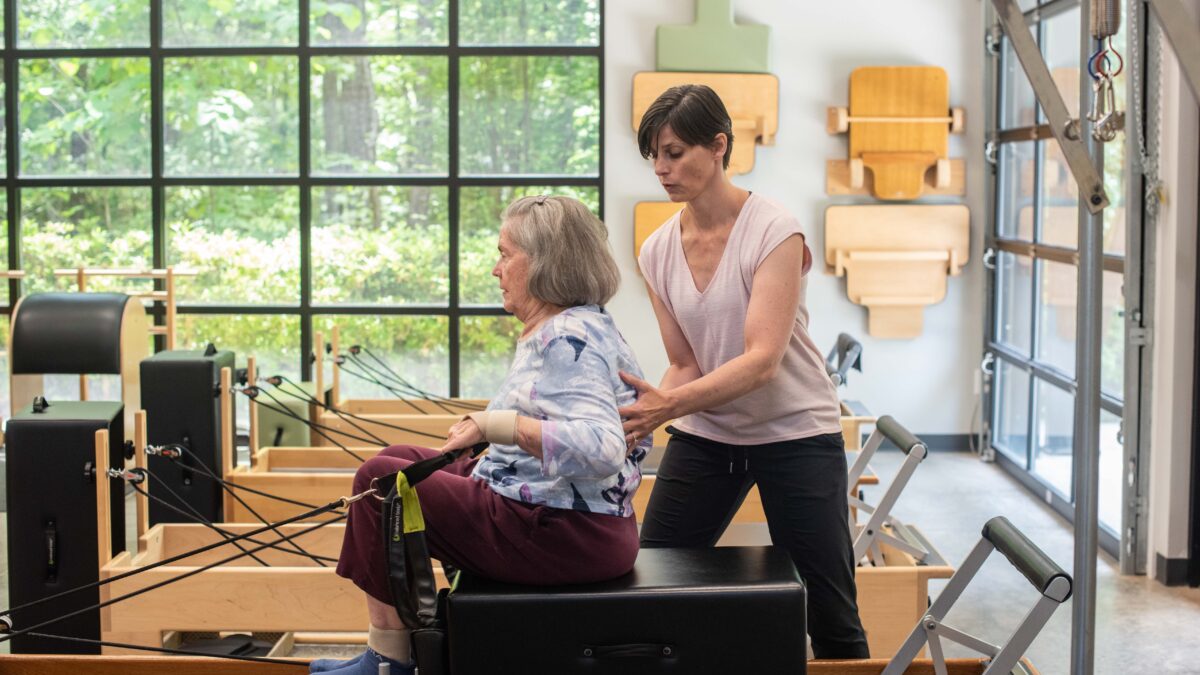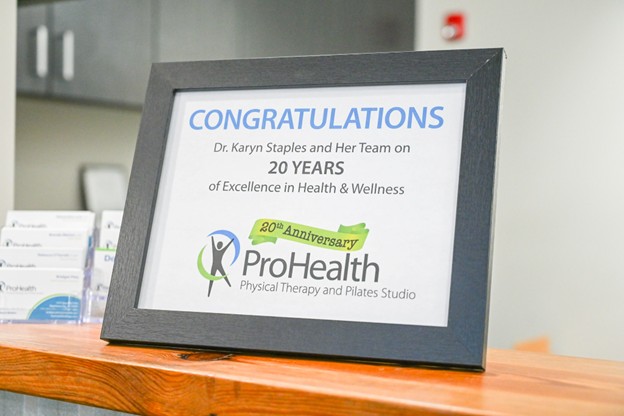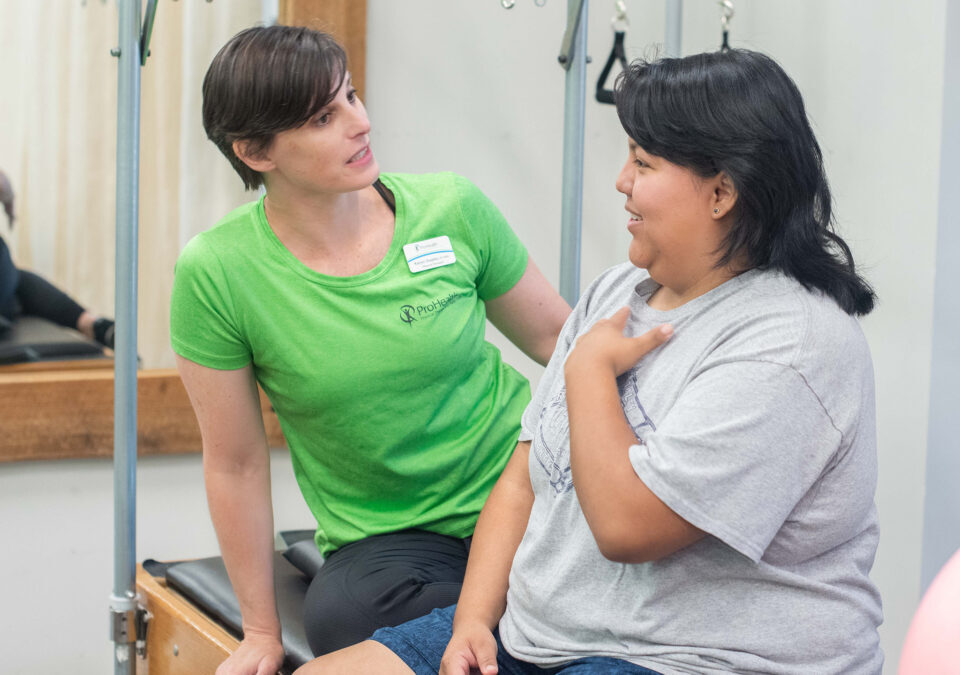- Mon - Fri
7.30 AM – 5.30 PM
Other hours upon request - 770-487-1931
How Pilates Can Improve Spinal Health and Posture

Working on posture
By Tamara Newell
March 2025
In today’s world, long hours at desks and screen time are commonplace. It’s not surprising
many people struggle with bad posture, back pain, and rounded shoulders. If you’re looking for
a way to improve your posture and support spinal health, try Pilates. This article explores how
Pilates and posture are deeply connected, answering key questions like how Pilates helps bad
posture, if it can fix a hunchback, and whether Pilates classes can help address rounded
shoulders. Read on to discover how this low-impact workout can support better posture and a
healthier spine.
Does Pilates help with bad posture?
Pilates improves bad posture through strengthening the core muscles, improving flexibility, and
bringing awareness to body alignment. All of these aspects assist in correcting and maintaining
good posture.
Can Pilates fix hunchback?
Pilates can help improve some of the issues associated with a “hunchback” or rounded upper
back, a condition often linked to poor posture, muscle imbalances, or conditions like kyphosis.
While Pilates may not “fix” the structural deformity of the spine entirely (depending on the
severity and root cause), it can significantly improve posture, strengthen the muscles around the
spine, and increase mobility. In turn, this may help reduce back pain associated with kyphosis.
Here’s how Pilates can help with a hunchback:
- Strengthening the Upper Back and Shoulders: Pilates exercises often focus on
strengthening the muscles between the shoulder blades, such as the rhomboids and
trapezius, which can help pull the shoulders back into proper alignment. - Stretching Tight Muscles: The muscles in the chest (pectorals) often get tight in those
with a hunchback. Pilates includes stretching exercises that open the chest and
shoulders, improving overall posture. - Improving Core Strength: A strong core supports the spine, which can help with overall
spinal alignment and reduce the forward rounding of the back. - Increasing Spinal Mobility: Pilates movements help enhance flexibility and mobility of
the spine, encouraging proper posture and reducing stiffness that contributes to poor
alignment. - Awareness of Posture: Pilates encourages awareness of body alignment and teaches
you how to engage muscles to maintain a neutral spine, which can correct postural
habits that contribute to a hunched back.
If you have a severe kyphosis or scoliosis, it’s important to consult with a healthcare
professional or physical therapist for a personalized treatment plan. Pilates can be a great
complementary approach, but it may not be enough on its own for more serious conditions.
Can Pilates correct rounded shoulders?
Rounded shoulders often result from poor posture, sitting for long periods, or muscle
imbalances, where the muscles of the chest become tight, and the muscles of the upper back
become weak. Pilates focuses on strengthening the muscles of the upper back and shoulders,
while also stretching the chest muscles, which can help counteract the forward slumping of the
shoulders.
Here’s how Pilates can help correct rounded shoulders:
- Strengthening Upper Back Muscles: Pilates exercises help strengthen the muscles
between the shoulder blades (rhomboids, lower traps, etc.), which can pull the shoulders
back into a more neutral position. - Stretching the Chest: Pilates includes stretches that help open up the chest (stretching
the pectorals), which is crucial for relieving tightness that contributes to rounded
shoulders. - Improving Postural Awareness: Pilates emphasizes body awareness and teaches you
how to maintain better alignment and posture throughout your movements, helping you
develop habits to keep your shoulders back and down. - Core Strength: A strong core stabilizes the spine and pelvis, which helps support proper
posture and prevents the shoulders from rounding forward.
Regularly practicing Pilates can help improve posture over time. But, consistency is key! Working with a ProHealth Pilates instructor to ensure you’re using proper form will help you reach your goals. Schedule a class today!




